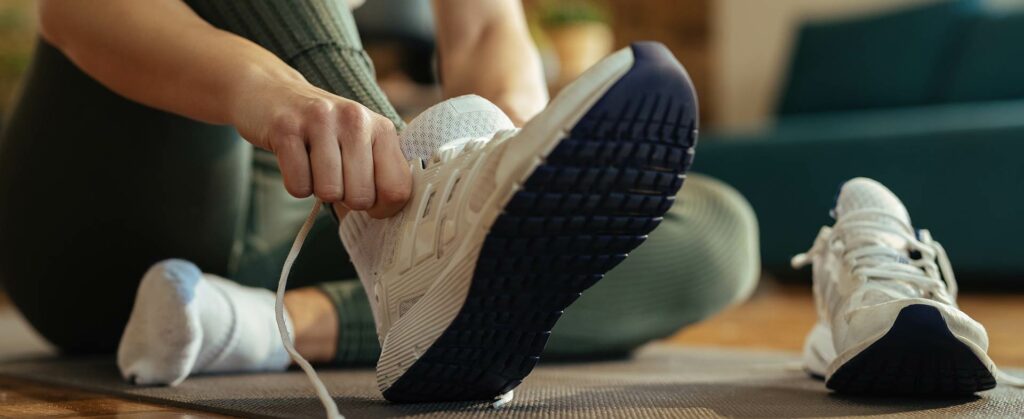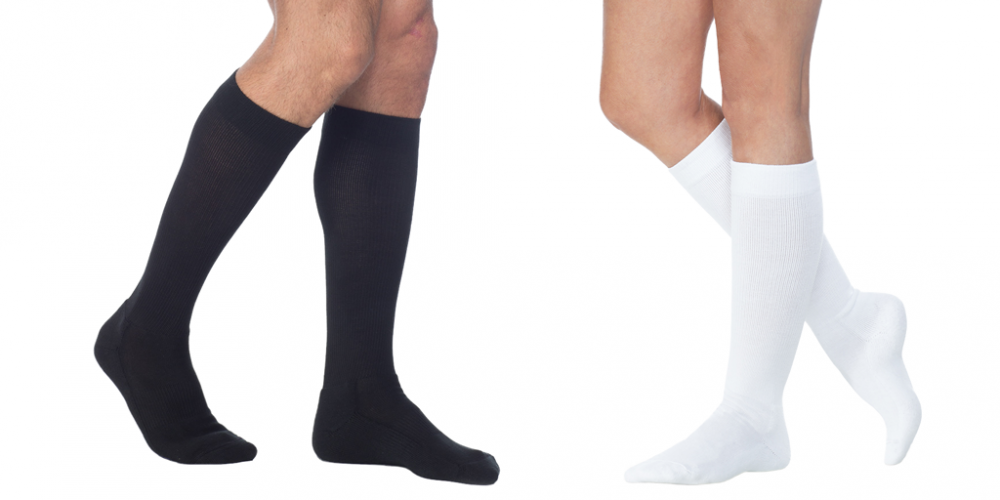Have a Doctor’s Referral?Book now
Diabetes Mellitus, a condition affecting over 2 million Canadians, is a chronic disease characterized by unstable blood sugar levels. These can fluctuate above or below the normal range. Prolonged elevated blood sugar levels can inflict damage upon both blood vessels and nerves throughout the body.
As of now, 463 million people were living with diabetes globally, a number projected to rise to 700 million by 2045. Individuals with diabetes are significantly more likely to develop life-threatening complications such as cardiovascular disease, with roughly 50% of diabetes-related deaths attributable to heart disease. Moreover, adults with diabetes are at a 10 to 20 times higher risk of amputation compared to those without the condition. These statistics emphasize the need for proactive treatment of diabetic patients.
Now, you may be wondering how this relates to foot health. Individuals with diabetes must exercise extra caution when it comes to their feet due to the adverse effects of reduced circulation. Diabetes takes a toll on the immune and circulatory systems, diminishing the body’s ability to heal itself. Additionally, diabetes can harm the sensory nerves in the feet, increasing the risk of various foot-related problems, particularly when nerve damage and poor circulation are at play.
One significant consequence of diabetes is neuropathy, which entails damage to the nerve fibers in the feet, often resulting in altered or completely absent sensation. Consequently, your body’s means of communicating tissue stress becomes compromised. This can impact your gait and lead to awkward and compensatory movements that can ultimately lead to complications.
Furthermore, the presence of high blood sugar levels can cause scarring in the small blood vessels of the feet. This impedes tissue healing, setting the stage for a vicious cycle of compounded tissue damage, affecting not only the skin but also the sub-dermal tissues, including bone, ultimately leading to amputation.
In conclusion, Diabetes harms feet by reducing blood flow and damaging nerves, leading to altered sensation and increased risk of complications. High blood sugar levels can also impair tissue healing, potentially resulting in severe damage and even amputation. Continue reading our blog to learn how proper footwear can protect your feet.
Diabetic patients often experience neuropathy, resulting in the loss of sensation in the foot. Therefore, wearing proper footwear is important to protect your feet. It is critical to reduce focal points of stress. At Kintec, our goal is to distribute pressure as evenly as possible using contoured insoles and footwear.
Having a secure fit in your shoe is essential. Rubbing, friction, and a loose fit can create just as many problems as tight footwear. Hot splits and blisters do not heal as quickly in diabetic patients as they do for other people. Therefore, inadequate footwear choices can potentially trigger more severe problems, including the development of ulcers and infections. In fact, 25% of diabetic patients will suffer from a foot ulcer at some point in their life.
Moreover, diabetic neuropathy can diminish foot sensation, making it challenging for individuals to detect issues like rubbing and blistering. Opting for footwear that provides extra room serves as a preventative measure, reducing the risk of skin abrasions and promoting overall foot health.
Your feet are your foundation, and we understand how foot pain, discomfort, and injury can have a big impact on your life. It’s why we’re so passionate about helping you find the perfect fit—so you can move better and go further than you ever thought possible.
During your 30- minute appointment with our Fit Experts, they will perform a thorough analysis of your feet, biomechanics, and history. This will guide them to help fit you with a shoe that meets your needs.
When it comes to finding the right pair of shoes, fit is the most important component. That’s why we developed our touchless 3D FitScan™ Technology. Within seconds, it captures thousands of data points to provide 10 specific measurements of your unique feet. It uses an artificial intelligence system with a worldwide database of over 5 million scans to compare individuals’ footwear preferences with your specific foot shape!
Additionally, there are a lot of technical components that go into every shoe. These functional elements play an important role in how the shoe aids with walking or reduces pain. Together we will guide you through which elements apply to your needs.
Most importantly, we want you to feel the comfort and benefit of your perfect fit. Test your footwear in-store and leave with the confidence to move better and go further than you ever thought possible.
An English study concluded that only 20% of diabetic patients wear the proper shoe size. In particular, diabetic patients are often wearing shoes that are too narrow.
Ill-fitting footwear frequently contributes to foot ulceration. Shoes that are too tight can cause pressure spots while a shoe that is too loose can result in abrasions or friction due to excess movement. A good-fitting shoe is an essential component in the management of the diabetic foot.
Look for footwear with a spacious toe box that leaves you lots of wiggle room. The front of the shoe should leave at least 1cm of space from the longest toe to the end of the shoe. With a little bit of extra space in the front of the shoe, there is less risk of calluses or blisters that can lead to an ulcer.
A good diabetic shoe will have an upper made from quality materials that will conform to the foot and breathe. Natural materials such as leather are more breathable and are softer on the foot. Mesh is also a good option as it is less restrictive. Softer materials can also allow stretch to accommodate foot prominences such as bunions.
Make sure the shoes you select have no inner seams that could rub and cause a blister or hot spot. Run your fingers around inside to make sure the inner lining is smooth. Ensure any seams are finished in a way that will not cause irritation or abrasion.
Diabetic shoes should have a method for adjusting the fit. Feet swell over the course of a day, slip-on shoes that fit well in the morning may chafe or cut off circulation by the afternoon. Laces and Velcro closures provide a better fit and give more support than a slip-on shoe such as a loafer.
In normal shoes, the forefoot bends during toe off and causes a concentration of stress on the ball of the foot (forefoot). Shoes with a strong rocker will automatically roll the foot forward with less need to bend the forefoot. This can assist with pressure distribution during gait.
People with diabetes need to wear shoes that provide a lot of cushioning and comfort to help prevent diabetic foot complications. Select footwear that offers plenty of heel and arch support and cushions the ball of the foot, the padded part of the sole between the toes and the arch. Look for cushioned soles instead of thin leather soles, as these will provide better shock absorption.
A good diabetic shoe will also have a reinforced area covering the heel of the foot. Reinforcement is achieved with an internal component known as the “heel counter”. Gently squeeze the heel of the shoe to see if that area is firm, almost rigid. A firm heel counter will help protect the heel and stabilize the foot.
Footwear modifications can also be done if specific features are needed, or if a shoe needs to be adjusted for an individual’s needs. Custom orthopaedic shoes may have to be made in more severe cases such as a Charcot foot deformity

To maintain optimal foot health, diabetic patients should make a habit of wearing footwear indoors at all times, including those late-night trips to the bathroom. This practice is crucial for safeguarding your feet against potential injuries like bruises or cuts from inadvertently stepping on objects around the house.
Before you even slip into your shoes, take a moment to inspect their interiors meticulously. Look out for any lurking rocks or cracks that might chafe against your feet or lead to uncomfortable blisters.
Furthermore, our pedorthists strongly advise incorporating a daily foot examination into your routine. To facilitate this, consider using a small angled mirror as a helpful tool for thorough foot checks. This proactive approach to foot care can be instrumental in preventing complications and ensuring your feet stay healthy.

Lastly, we also recommend that diabetic patients consider diabetic socks. These socks offer a first line of protection for your feet that is specifically designed for the unique needs of people with diabetes. These socks have these key features:
A Fit Expert can help you to find the best sock to meet your needs. These diabetic socks help reduce foot and leg swelling by increasing blood flow. Additionally, these socks promote circulation and alleviate muscle fatigue, helping you feel revitalized and energetic throughout the day.
Our Canadian Certified Pedorthist will carefully evaluate your medical history and examine your feet. Based on their findings, they will develop a personalized treatment plan that will include proper footwear
Our goal with assessment and treatment is to:
If you have any questions, call us at 604-200-3338 or make an appointment to visit us in-store.